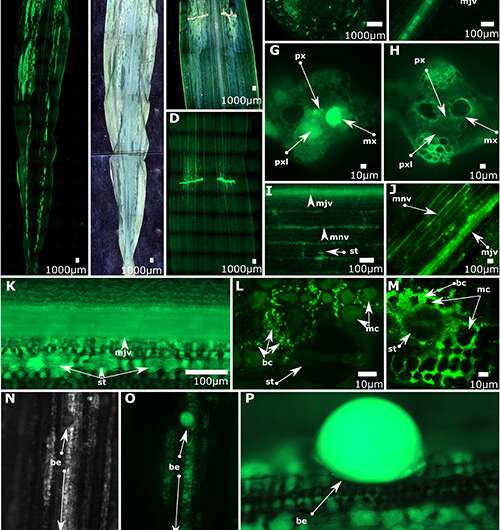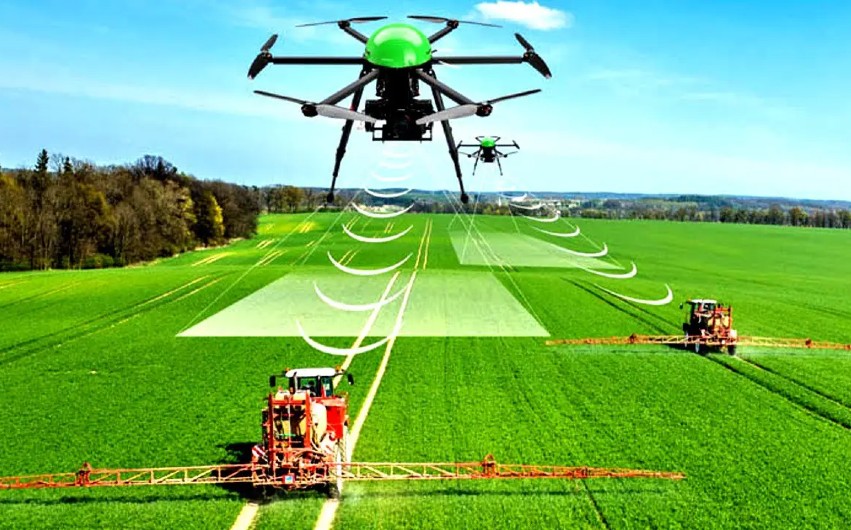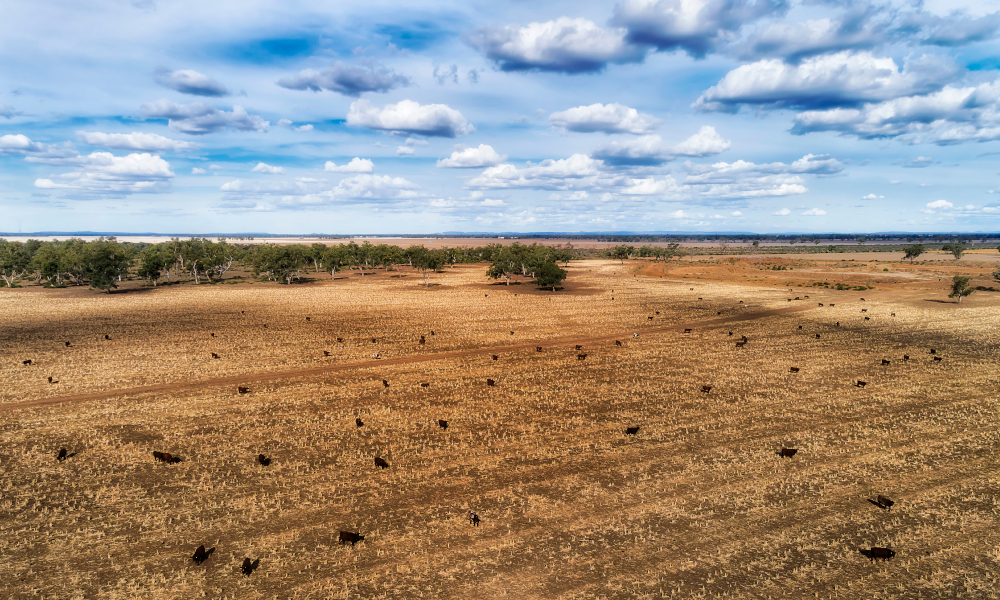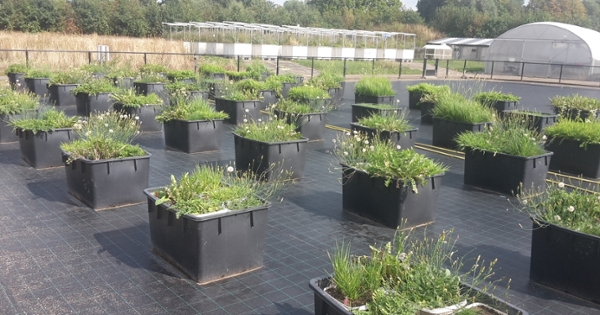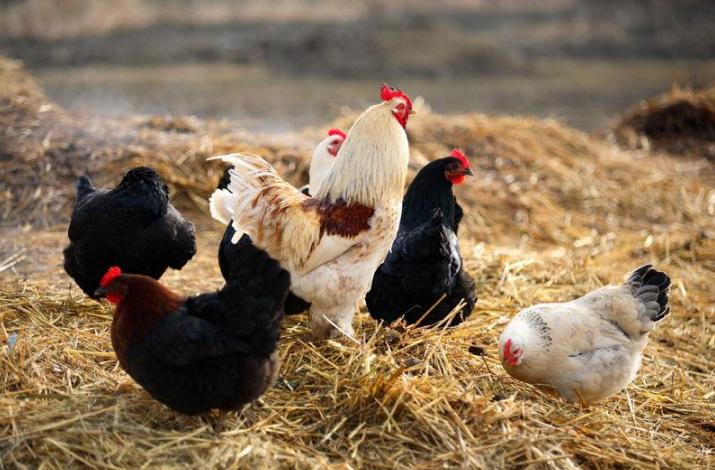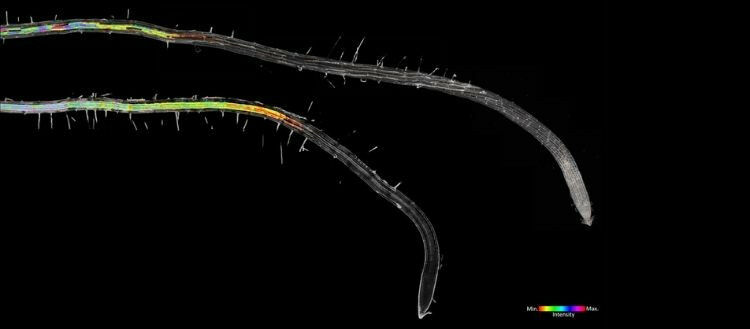 John LaRose Jr.
John LaRose Jr.
Topics: Corn/Maize, Precision AG , Agriculture Global, Crop Diseases, Research, Plant Breeding,
Bacteria enters through natural openings at edges of corn leaves to cause Goss's wilt- TechCodex
Bacterial colonization and movement. Credit: Alexander Mullens and Tiffany M. Jamann Goss’s bacterial wilt and leaf blight is one of the most damaging diseases affecting corn. The most effective way to control this disease is to plant corn varieties that are resistant to the disease. In other words, growers avoid the disease by growing certain […]
-
(0)
-
Bookmark
- Comments (0)
 John LaRose Jr.
John LaRose Jr.
Topics: Rice, Precision AG , Agriculture US, Agriculture Global, Ag Podcast US, Climate Change, Ag Podcast Global,
-
(0)
-
Bookmark
- Comments (0)
 John LaRose Jr.
John LaRose Jr.
Topics: Precision AG , Agriculture Global, GMO's, Research, Genes /Genetics, Ag Australia/NZ, Plant Breeding, Food Security/Shortage,
Fast-forward breeding and rapid delivery systems for food security : Research for Agriculture
The University of Western Australia’s Institute of Agriculture has collaborated with international researchers to develop a roadmap to fast-forward breeding for accelerated crop improvement and rapid delivery systems, which will lead to a food-secure world. Two papers, recently published in Trends in Genetics and Nature Biotechnology, were the result of a Perth-based workshop organised by […]
-
(0)
-
Bookmark
- Comments (0)
 John LaRose Jr.
John LaRose Jr.
Topics: Precision AG , Crop Consultant, Agriculture Global, Conservation/Tillage, Drones UAV, Sustainability, Crop Diseases, Research, Ag Tech, Ag Innovation,
Analysis: Importance of science and technology in modern farming
Scientific discoveries and technological novelties greatly assist agribusiness, making it faster, more accurate, cost-effective, and efficient. At the disposal of present-day farmers, there are eco…
-
(0)
-
Bookmark
- Comments (0)
 John LaRose Jr.
John LaRose Jr.
Topics: Soil Health, Precision AG , Agriculture Global,
-
(0)
-
Bookmark
- Comments (0)
 John LaRose Jr.
John LaRose Jr.
Topics: Soil Health, Precision AG , Agriculture Global, Economics, Research, Renewable Energy (Solar/Wind),
Helping Farmers Benefit from Soil Management : Research for Agriculture
The Australian Government has released for public consultation a draft soil carbon method for the Emissions Reduction Fund (ERF). Minister for Energy and Emissions Reduction Angus Taylor said the new method will support greater uptake of soil carbon projects by overcoming barriers to participating in the ERF by reducing costs and introducing new activities to […]
-
(0)
-
Bookmark
- Comments (0)
 John LaRose Jr.
John LaRose Jr.
Topics: Soil Health, Precision AG , Agriculture Global, Crop Diseases, Genes /Genetics, Ag Innovation,
Fungal transplants from close relatives help endangered plants fight off disease
Endophytic fungi, which reside inside leaves, often protect plants from pathogens. In a paper recently published in Phytobiomes Journal, Chock along with fellow University of Hawaii researchers Benjamin Hoyt and Anthony Amend, treated E. koolauensis plants with endophytic fungi isolated from the leaves of closely related plant species, then assessed the resistance of these inoculated plants against myrtle rust. Although some individual strains of fungi seemed to decrease the pathogen severity, plants were most protected against the pathogen when treated with a complex mixture of microbes prepared from homogenized leaves of these related plants.
-
(0)
-
Bookmark
- Comments (0)
 John LaRose Jr.
John LaRose Jr.
Topics: Soil Health, Precision AG , Agriculture Global, GMO's, Genes /Genetics,
Bacteria stunt with established plant-soil feedback theory
‘What I find most alluring about soil life is that you can steer it,’ researcher Martijn Bezemer of the Institute Biology Leiden (IBL) reveals. ‘You can ask: What do you want? And then I can transform the soil into something you need. At least, that is what we thought.’
-
(0)
-
Bookmark
- Comments (0)
 John LaRose Jr.
John LaRose Jr.
Topics: Precision AG , Agriculture Global, Poultry, Economics, Research, Education,
Risk of airborne transmission of avian influenza from wild waterfowl to poultry negligible
Research by Wageningen Bioveterinary Research (WBVR) has shown that the risk of airborne transmission of high pathogenic avian influenza virus from infected wild birds is negligible. The research looked specifically at the airborne movement of particles from wild waterfowl droppings in the vicinity of poultry farms during the risk season for avian influenza (October to March). It also considered transmission via aerosolization, with the exhalations or coughs of wild waterfowl infected with avian influenza virus finding their way into the ventilation systems of poultry farms. As a precaution, it’s important that the carcasses of wild waterfowl or other wild birds that have died of high pathogenic avian influenza are removed from their habitat as soon as possible. If not, scavengers eating the carcasses could cause feathers to become distributed. Feathers of wild birds that died of, and if the wild bird died of high pathogenic avian influenza contain the virus, which can then the virus can survive for a long time in those feathers.
-
(0)
-
Bookmark
- Comments (0)
 John LaRose Jr.
John LaRose Jr.
Topics: Soil Health, Precision AG , Commodities, Crop Consultant, Agriculture Global, Sustainability, Research, World Hunger,
The defensive arsenal of plant roots
24.09.2021 - A team from the University of Geneva has discovered the mechanisms that regulate the formation of the protective layer of plant roots.
-
(0)
-
Bookmark
- Comments (0)


